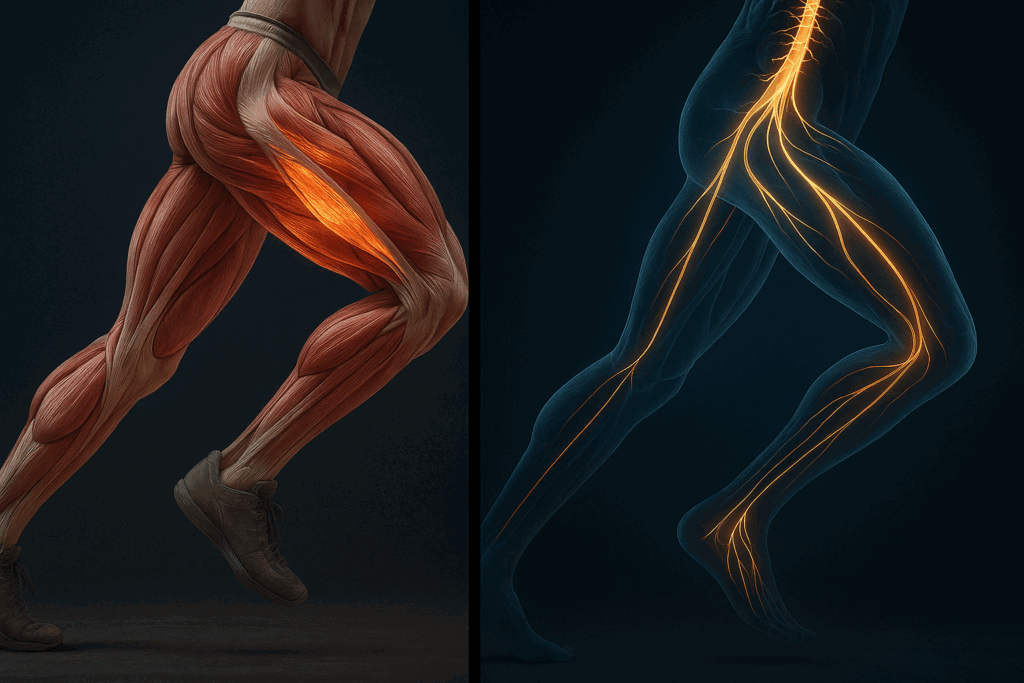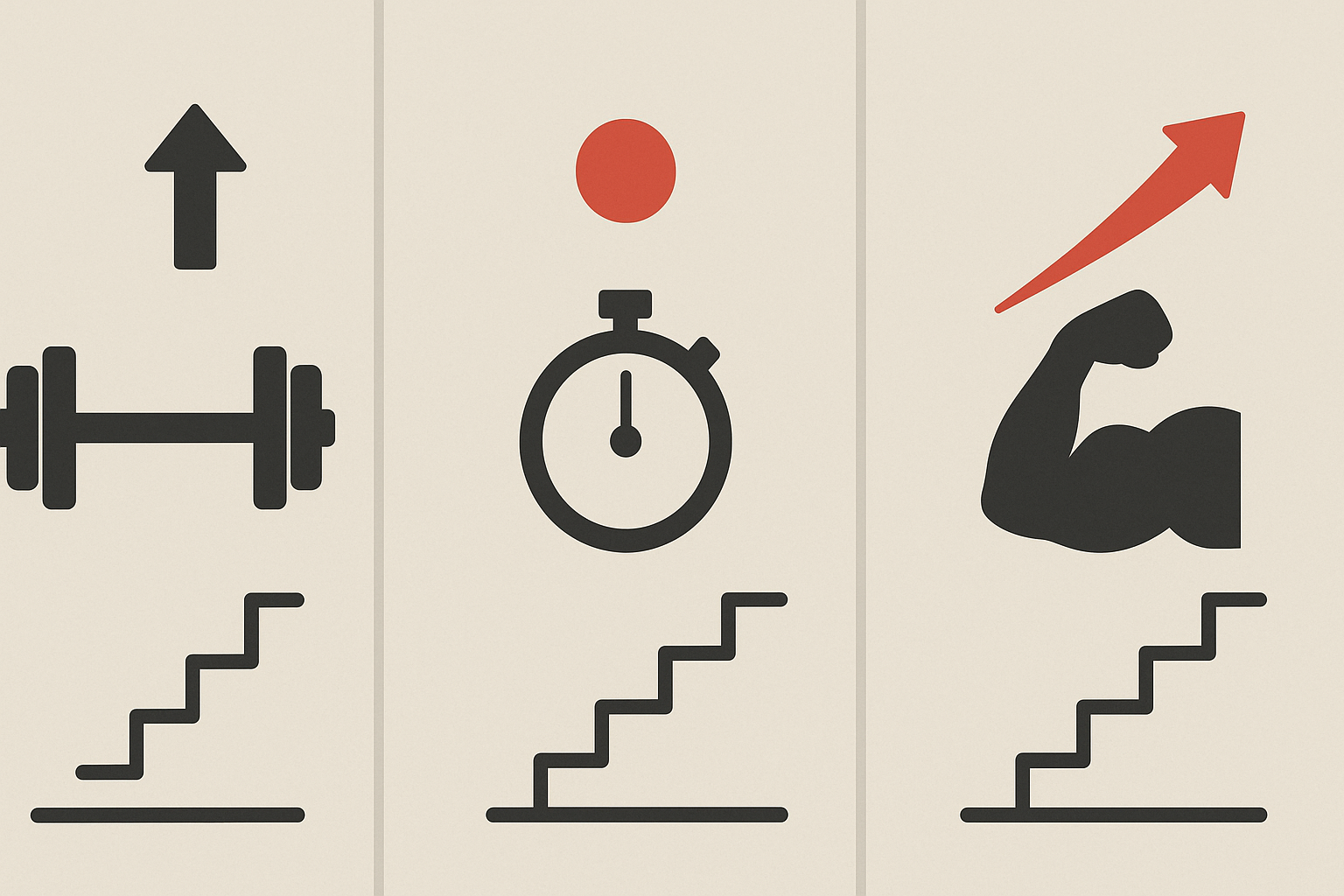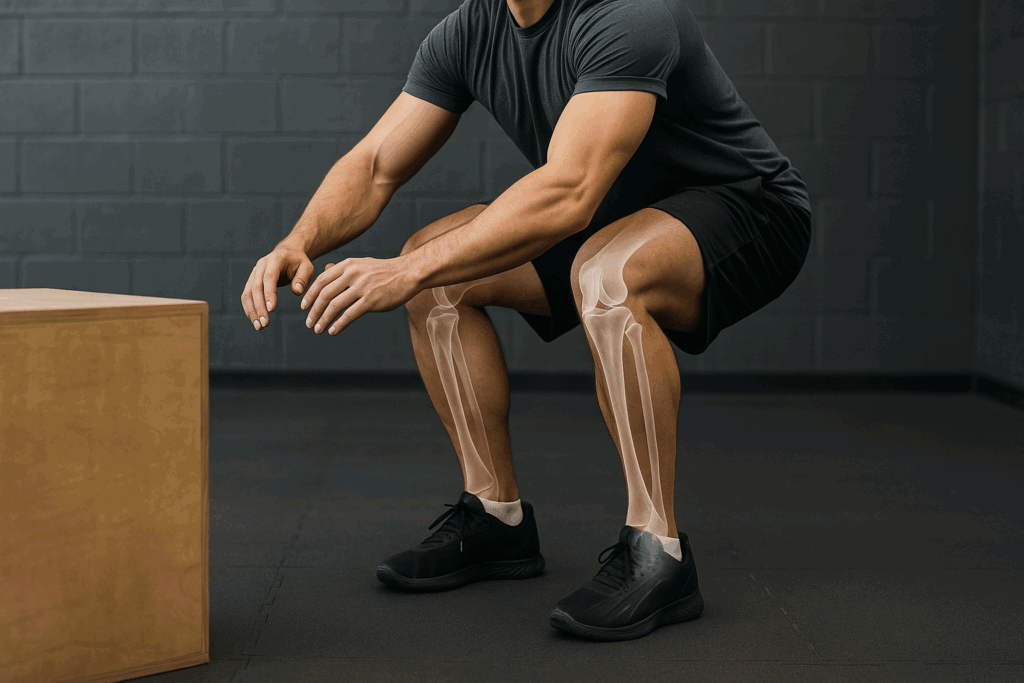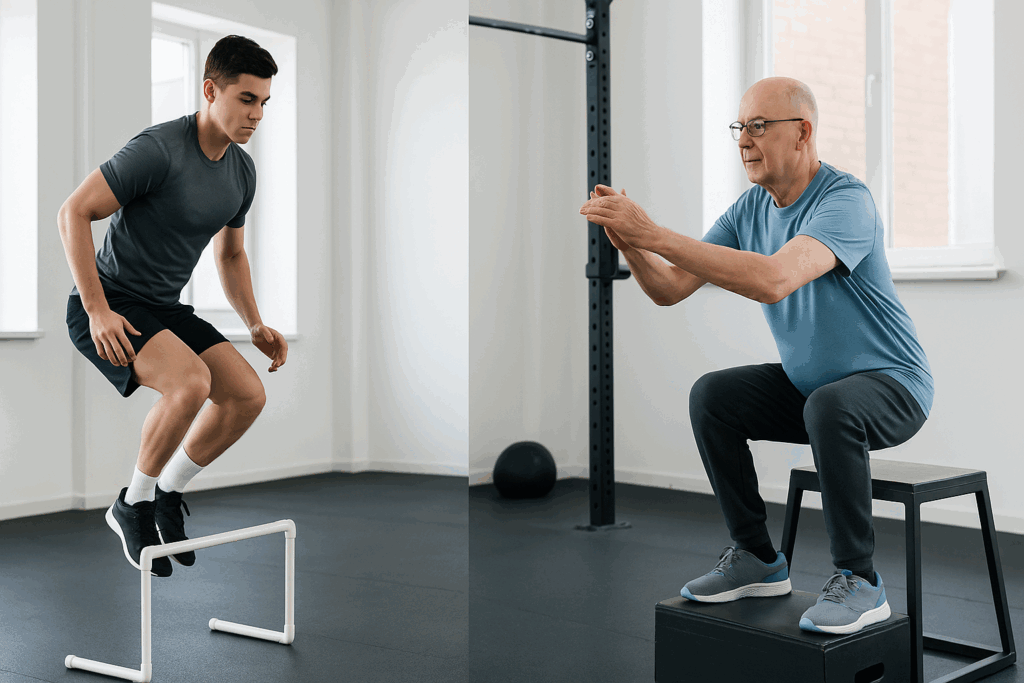In the world of advanced strength and conditioning, there are few strategies as compelling and results-driven as the implementation of explosive leg exercises. These movements, often grounded in high-velocity, power-focused training principles, are not merely reserved for Olympic-level athletes or elite powerlifters. Instead, they are increasingly recognized as a vital component of a well-rounded muscle-building regimen for anyone serious about developing exceptional strength and muscular size. When applied correctly, explosive leg exercises can initiate profound neuromuscular adaptations that elevate hypertrophy, amplify force production, and dramatically improve functional performance across a wide range of athletic and everyday movements.
The integration of explosive leg exercises into a structured training program offers benefits that extend far beyond aesthetics. While many lifters pursue lower body development primarily for the sake of physique enhancement, what they may overlook is how powerful, dynamic leg work can transform the entire kinetic chain. These exercises—ranging from plyometric jump squats and depth jumps to Olympic lifts and loaded jump variations—place unique demands on the body that stimulate both Type II muscle fibers and central nervous system responsiveness. The result is a synergistic effect that promotes not only muscular growth but also greater agility, speed, and athletic efficiency. Understanding how and why explosive leg training works—and how to implement it effectively—is critical for athletes, bodybuilders, and fitness enthusiasts seeking to optimize performance and maximize gains.
You may also like: The Ultimate Hypertrophy Workout Program for Building Strength and Size

The Science Behind Explosive Leg Training
Explosive leg training is underpinned by key principles of exercise physiology and neuromuscular science. At its core, this form of training emphasizes rapid muscle contractions with the goal of generating maximal force in minimal time. This is the essence of power: the product of strength and speed. When an individual performs an explosive leg movement, such as a jump lunge or a power clean, they are challenging their body to coordinate a highly synchronized effort involving the muscles, tendons, and nervous system.
One of the most critical adaptations resulting from explosive leg workouts is the recruitment of high-threshold motor units. These are the muscle fibers that possess the greatest potential for strength and hypertrophy but are typically dormant during low-intensity or slow-twitch movements. By demanding maximal effort and high-speed execution, explosive exercises stimulate these motor units in a way that traditional resistance training often does not. Over time, this increased recruitment translates into more robust muscle development and greater overall strength.
Additionally, explosive movements improve the rate of force development (RFD), which is a crucial metric in athletic performance. Athletes with high RFD can produce large amounts of force in very short timeframes—a critical attribute for sprinting, jumping, cutting, and lifting. But even for those not engaged in competitive sports, higher RFD can enhance daily movement quality and reduce injury risk, especially during unexpected challenges like slipping or lifting heavy loads. Therefore, integrating explosive leg training into one’s workout routine can serve both performance-oriented and functional health goals.

Explosive Leg Exercises and Muscle Fiber Activation
One of the most profound physiological benefits of explosive leg exercises is their targeted activation of fast-twitch (Type II) muscle fibers. These fibers are responsible for rapid, high-force movements and have the greatest potential for growth in cross-sectional area. While slow-twitch fibers contribute to endurance and are more frequently engaged during low-intensity aerobic activity, it is the fast-twitch fibers that bodybuilders and strength athletes must prioritize to achieve substantial gains in size and power.
When an individual engages in exercises like kettlebell swings, box jumps, or jump squats, they are forcing the neuromuscular system to fire rapidly and forcefully. This type of training not only stimulates these fibers directly but also enhances the speed and efficiency with which the nervous system can activate them. This process, known as neuromuscular adaptation, is central to explosive strength gains. Over time, these adaptations make the body more capable of executing powerful movements efficiently, which is why explosive leg workouts are an essential part of programs aimed at increasing muscle size and athletic capacity.
Moreover, explosive movements often require the muscles to lengthen quickly under load before rapidly shortening—a phenomenon known as the stretch-shortening cycle (SSC). The SSC enhances elastic energy storage in the muscle-tendon unit, which amplifies power output and further stimulates muscle growth. This dual action of neural and mechanical loading creates an ideal environment for hypertrophic signaling, particularly in the glutes, hamstrings, quadriceps, and calves.

The Role of Explosive Leg Workouts in Hypertrophy
Traditional hypertrophy training typically revolves around moderate loads, higher repetitions, and controlled tempos. While this approach is effective for stimulating muscle damage and metabolic stress—two primary drivers of hypertrophy—it often neglects the third pillar of muscle growth: mechanical tension generated at high speed. Explosive leg workouts uniquely contribute to hypertrophy by introducing this high-velocity mechanical tension, which activates alternative signaling pathways for muscle development.
For instance, performing jump squats with a weighted vest or executing barbell jump lunges not only overloads the muscles in a novel manner but also creates time-under-tension patterns that differ from standard lifts. These exercises demand forceful contractions in an unstable and reactive environment, thereby enhancing the mind-muscle connection and forcing the musculature to adapt rapidly to changing demands. In response, satellite cells are activated, muscle protein synthesis is increased, and anabolic signaling pathways such as mTOR are stimulated—all of which are crucial for muscle repair and growth.
Furthermore, the hormonal response elicited by explosive movements adds another layer of hypertrophic potential. Studies have shown that high-intensity, explosive training can elevate levels of growth hormone and testosterone—two hormones closely associated with muscle building. While the acute hormonal response may not be the sole driver of hypertrophy, it contributes to an anabolic internal environment that supports muscle repair, nutrient uptake, and recovery. When strategically programmed alongside traditional hypertrophy protocols, explosive leg exercises can create a potent synergistic effect that accelerates muscle gains.

Explosive Leg Exercises for Building Strength and Speed
Explosive leg training is uniquely positioned at the intersection of strength and speed development. Unlike maximal strength training, which often involves heavy, slow lifts such as squats and deadlifts, explosive movements rely on submaximal loads performed at maximal velocity. This distinction is critical because it allows for the development of speed-strength—a quality that enables athletes to express strength quickly, which is essential for most sports and dynamic physical activities.
Exercises like hang cleans, snatch pulls, and depth jumps are powerful tools for cultivating speed-strength. These movements demand not only leg power but also core stability, postural control, and coordination. As athletes refine their technique and build neuromuscular efficiency, they become capable of expressing force more rapidly and efficiently. This capacity translates into better sprinting mechanics, improved jumping height, and greater reactivity in cutting or change-of-direction tasks.
Moreover, explosive leg workouts provide a bridge between raw strength and functional athleticism. They train the body to use strength dynamically and contextually, rather than in a static or isolated manner. This functional integration makes the training highly transferable to real-world scenarios, whether in competitive sports or physically demanding occupations. In contrast, traditional strength training—though essential—can become overly specialized if not balanced with dynamic movement patterns. By incorporating explosive leg exercises, athletes can ensure a more holistic and balanced development of strength attributes.

Injury Prevention and Joint Resilience through Explosive Movements
While explosive leg training is often associated with performance enhancement, it also plays a pivotal role in injury prevention and musculoskeletal health. High-velocity leg movements reinforce the integrity of the joints, tendons, and ligaments by exposing them to variable loads and dynamic stressors. This exposure forces the connective tissue to adapt and become more resilient, reducing the risk of injury during high-demand activities.
For example, eccentric loading during landing phases of explosive movements like box jumps or hurdle hops trains the musculotendinous units to absorb shock effectively. Over time, this adaptation reduces the likelihood of non-contact injuries such as ACL tears or patellar tendinopathy, particularly in sports that involve jumping, cutting, or sprinting. Additionally, training the body to produce and absorb force in multiple planes of motion fosters joint stability and functional mobility.
Beyond structural adaptations, explosive exercises also enhance proprioception and intermuscular coordination. These qualities are essential for maintaining balance, agility, and injury-free movement patterns during both athletic and daily activities. Therefore, explosive leg workouts serve as both a performance enhancer and a safeguard against the biomechanical stresses of intense training and unpredictable movement scenarios.
Designing an Effective Explosive Leg Training Program
Creating a well-structured explosive leg training program requires careful consideration of training age, movement competency, load tolerance, and overall goals. For novice lifters, it is essential to first establish foundational strength and joint stability through traditional strength movements such as squats, lunges, and hip thrusts. Once a base level of strength is achieved, explosive exercises can be introduced gradually, focusing on bodyweight plyometrics before progressing to loaded variations.
A typical explosive leg workout might begin with movement prep, including mobility drills and dynamic stretching, followed by activation exercises like banded glute bridges or pogo hops. The main training block would then consist of two to three primary explosive movements—such as weighted jump squats, barbell jump lunges, or kettlebell swings—performed for low to moderate repetitions with full recovery between sets. This allows for maximal power output without excessive fatigue.
It is also crucial to periodize explosive training within the broader context of the athlete’s programming. For example, during the off-season or a hypertrophy-focused phase, explosive exercises may serve as secondary movements to augment strength and mass. In contrast, during pre-competition or power phases, these movements become the primary focus, with volume and intensity tailored to peak power production. Balancing intensity, volume, and rest ensures that the athlete reaps the full benefits of explosive training without overtraining or compromising recovery.
Why Explosive Leg Workouts Are Essential for Athletic Development
Explosive leg workouts form the cornerstone of high-level athletic preparation because they closely mimic the demands of most competitive sports. Whether an athlete is sprinting down a soccer field, leaping for a basketball rebound, or performing a takedown in wrestling, the ability to generate rapid force from the lower body is non-negotiable. Explosive training develops this capacity by improving not just muscle size, but also neuromuscular timing, reactive strength, and movement precision.
Athletes who incorporate explosive leg exercises into their routines often demonstrate superior acceleration, deceleration, and multidirectional agility. These are critical components of athletic success that cannot be fully developed through traditional strength work alone. Moreover, explosive training enhances the athlete’s ability to transition smoothly between movement patterns, such as shifting from a sprint to a jump or from a cut to a tackle. This fluidity and responsiveness can create a competitive edge that separates elite performers from their peers.
Beyond the physical realm, explosive training also has psychological benefits. The intensity and demand of these movements cultivate mental toughness, focus, and confidence. Athletes must be fully present and committed during each repetition, as the success of the movement often hinges on timing, precision, and maximal effort. Over time, this mindset carries over into competition, where the ability to perform under pressure becomes a critical determinant of success.
The Metabolic and Cardiovascular Impact of Explosive Movements
While the primary goal of explosive leg training is often strength and hypertrophy, it also confers significant cardiovascular and metabolic benefits. High-intensity movements performed at maximum velocity create a substantial oxygen demand, triggering a cardiovascular response that improves heart and lung capacity. Unlike steady-state cardio, explosive training creates an anaerobic stimulus that also boosts metabolic rate and post-exercise oxygen consumption (EPOC).
This elevated metabolic effect means that explosive leg workouts can support fat loss and body recomposition goals, particularly when incorporated into circuit-style training formats. By sequencing multiple explosive movements—such as squat jumps, burpees, and box jumps—athletes can achieve both muscular and cardiovascular stimulation within a condensed timeframe. This approach is ideal for individuals seeking to maximize training efficiency while still prioritizing lower body development.
Furthermore, explosive training increases lactate threshold and enhances mitochondrial density in the muscle cells. These adaptations improve the body’s ability to buffer fatigue, sustain high-intensity efforts, and recover between bouts of exertion. As a result, athletes become more resilient, less prone to energy crashes, and more capable of handling the demands of frequent or prolonged competition.

Programming Considerations for Different Populations
While explosive leg exercises offer immense benefits, they must be carefully adapted to suit different populations and training backgrounds. For younger athletes, the focus should be on body control, coordination, and technique mastery. Simple drills like bounding, hopping, and skipping can be extremely effective for laying the groundwork for future power development. These movements also instill movement literacy and proprioceptive awareness—critical attributes for long-term athletic success.
For older adults or those returning from injury, explosive training must be approached with caution and scaled appropriately. Low-impact variations such as medicine ball throws, mini-hurdle step-ups, or seated jumps can provide a similar neuromuscular stimulus without excessive joint strain. Additionally, eccentric emphasis exercises like slow deceleration lunges or eccentric box step-downs can prepare the connective tissue for more advanced power work in the future.
Women, too, benefit immensely from explosive leg workouts, particularly due to the increased risk of ACL injuries associated with hormonal fluctuations and biomechanical differences. Properly executed jump training not only strengthens the musculature but also trains optimal landing mechanics and knee alignment. This proactive approach to injury prevention and athletic development empowers women to train confidently and effectively while achieving their strength and physique goals.

The Neurocognitive Benefits of Explosive Training
An often-overlooked advantage of explosive leg exercises is their impact on neurocognitive function. Because these movements require high levels of motor coordination, timing, and proprioception, they engage brain regions associated with movement planning and sensory integration. This dual stimulation of body and brain can enhance neural plasticity and promote better communication between the central and peripheral nervous systems.
In practice, this means that athletes who regularly engage in explosive leg workouts may also experience improvements in reaction time, spatial awareness, and mental clarity. These cognitive enhancements are particularly valuable in sports that demand split-second decision-making or complex movement strategies. Moreover, the heightened arousal and focus required during explosive efforts may translate into improved mental discipline and concentration in both athletic and academic pursuits.
The cognitive benefits of explosive training are not limited to elite performers. Everyday individuals—particularly aging adults—can use explosive movements to maintain cognitive sharpness and prevent age-related decline. As research continues to explore the relationship between physical training and brain health, explosive leg training is emerging as a promising tool for enhancing both physical vitality and mental acuity.
Frequently Asked Questions About Explosive Leg Training and Performance
1. How can explosive leg exercises benefit endurance athletes like runners or cyclists?
Explosive leg exercises aren’t just for powerlifters or sprinters—they’re a valuable asset for endurance athletes too. By enhancing fast-twitch muscle fiber recruitment, they help runners and cyclists develop greater power output during sprints or climbs. This neuromuscular efficiency reduces fatigue over long distances, enabling quicker recovery between intense bursts. Many endurance athletes overlook the importance of short-duration, high-intensity movements, yet these contribute significantly to stride efficiency and cadence control. Implementing explosive leg training two to three times per week can elevate overall performance without compromising endurance goals.
2. Can explosive leg workouts reduce the risk of falls and injury in older adults?
Yes, when properly scaled, explosive leg workouts can significantly improve balance, coordination, and reaction time in older adults. These exercises, such as box step-ups or seated jump squats, stimulate proprioceptive feedback and strengthen stabilizing muscles, which are crucial for fall prevention. While heavy lifts may not be appropriate, modified versions that emphasize control and quick ground reaction can be safely introduced under professional supervision. Research also suggests that explosive strength, not just slow-force production, plays a role in stabilizing sudden movement disruptions. With proper progression and joint-friendly variations, this training becomes a proactive tool for mobility and safety in aging populations.
3. What psychological benefits are associated with explosive leg training?
Explosive leg training doesn’t only enhance physical capabilities—it also boosts mental performance. Engaging in high-intensity, fast-paced movement patterns improves focus, sharpens motor coordination, and promotes neural plasticity. The mental demand of executing complex, powerful movements fosters a heightened sense of body awareness and presence. Additionally, these workouts often release high levels of endorphins and dopamine, which contribute to reduced anxiety and elevated mood. Over time, consistent explosive leg training can even improve self-confidence and resilience, particularly for athletes looking to overcome mental blocks around speed or agility.
4. How should explosive leg exercises be adapted during injury rehabilitation?
Injury rehab doesn’t mean abandoning explosive leg exercises—it means modifying them to respect tissue healing while maintaining neuromuscular engagement. For example, using resistance bands or water-based movements can simulate explosive patterns without loading the joints excessively. The goal is to retain some speed and dynamic motion to prevent complete deconditioning of power pathways. Rehabilitation experts often use tempo variations and isometric-to-explosive transitions to gradually reintroduce forceful movements. These adaptive strategies not only preserve muscle memory but also enhance recovery outcomes by stimulating circulation and joint stabilization.
5. What’s the difference between explosive leg workouts for hypertrophy versus athletic performance?
When tailored for hypertrophy, explosive leg workouts emphasize controlled tempo, eccentric loading, and slightly higher rep ranges—typically in the 6–10 range—to create muscle damage and volume growth. In contrast, athletic performance protocols focus more on rate of force development, ground contact minimization, and nervous system priming. Movements like jump squats or depth jumps use lower volume but higher intensity and velocity. Both styles can include explosive elements, but the programming details diverge based on the end goal. Understanding the distinction allows athletes to build size without compromising speed, or boost performance without excessive muscle fatigue.
6. What Are the Long-Term Benefits of Consistently Incorporating Explosive Leg Exercises Into Your Routine?
Over time, explosive leg exercises lead to structural and functional adaptations that extend beyond short-term performance gains. These include denser bone mineral content due to impact loading, improved joint proprioception, and more efficient central nervous system firing patterns. Athletes who commit to this type of training often notice improvements in quick change-of-direction ability and reactive strength, both of which are critical for sports like basketball or martial arts. Additionally, it supports better posture and stride mechanics, especially in unilateral or rotational variations. Long-term integration also builds psychological resilience by training the brain to respond rapidly to high-stress stimuli, both in and outside the gym.
7. Are there gender-specific considerations when designing explosive leg workouts?
Yes, hormonal profiles, joint laxity, and muscle fiber distribution influence how explosive leg workouts should be designed for men and women. Women typically have a greater proportion of type I fibers, meaning they may benefit from slightly longer time-under-tension before integrating maximal explosive efforts. Furthermore, due to higher rates of ACL injuries, especially in female athletes, plyometric drills should emphasize landing mechanics, valgus control, and hip-knee alignment. That said, with proper coaching and load progression, women can develop explosive power at levels equal to men relative to body weight. Program design should reflect these biomechanical and physiological nuances without reducing the overall intensity or challenge.
8. Why Explosive Leg Training Is a Must for Athletes Seeking Competitive Edge
Athletes in nearly every sport can benefit from explosive leg training because it cultivates a rapid rate of force development, which translates into quicker sprints, higher jumps, and more efficient directional changes. Unlike slow, grinding strength work, this training stimulates the nervous system to recruit motor units at lightning speed. It’s this ability to generate force quickly that often distinguishes elite athletes from average performers. Incorporating exercises like band-resisted sprints, Bulgarian split jump squats, or loaded jumps into a periodized program amplifies agility, reaction time, and multidirectional control. These enhancements become game-changers in scenarios requiring spontaneous acceleration or deceleration.
9. How do explosive leg exercises influence hormones related to muscle and fat loss?
High-intensity, ballistic movements involved in explosive leg exercises trigger a robust hormonal response, including elevated levels of testosterone, growth hormone, and catecholamines. These hormones collectively contribute to lean muscle gain, increased metabolic rate, and enhanced fat oxidation. Compared to traditional resistance training, the explosive nature of the movement recruits more muscle groups and stimulates faster oxygen debt, leading to a prolonged post-exercise calorie burn. For those seeking physique transformations, this style of training can create a metabolic environment conducive to both muscle retention and fat reduction. However, for optimal results, it must be paired with adequate sleep, recovery, and nutrition.
10. Can explosive leg training improve coordination in non-athletes or those new to fitness?
Absolutely. Explosive leg training isn’t limited to elite athletes; it can serve as a powerful coordination builder for beginners and non-athletes alike. Movements like medicine ball slams, mini-hurdle hops, or low-box jumps train the body to respond quickly, sequence muscles efficiently, and maintain dynamic balance. This neuromuscular stimulation helps new trainees build motor control, reduce joint compensations, and develop symmetrical strength. As coordination improves, everyday tasks such as climbing stairs or navigating uneven surfaces become easier and safer. The key is starting with low-complexity drills and progressively advancing intensity and movement variability under guidance.
Conclusion: Embracing Explosive Leg Exercises for Total Strength, Size, and Performance
As the evidence clearly shows, explosive leg exercises are far more than a niche tool for athletes. They represent a powerful, multidimensional training modality capable of delivering significant improvements in strength, hypertrophy, performance, and overall functional health. When strategically implemented, explosive leg training enhances the recruitment of fast-twitch fibers, boosts neuromuscular efficiency, and activates unique physiological pathways for growth and resilience.
From jump squats and power cleans to kettlebell swings and depth drops, the diverse range of explosive leg workouts available makes it easy to tailor programs for every goal and ability level. Whether the objective is to build formidable quads, dominate in sports, or simply move with more power and precision in daily life, integrating explosive leg exercises is a scientifically supported and highly effective strategy. As part of a comprehensive training approach, these movements can unlock the full spectrum of muscular and athletic potential—proving that power, indeed, is the gateway to peak performance.
Further Reading:
Great Exercises for Explosive Leg Strength





